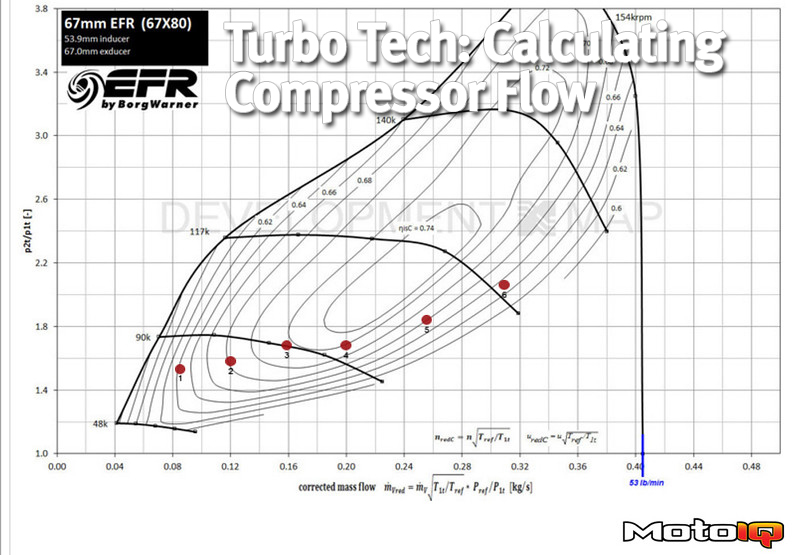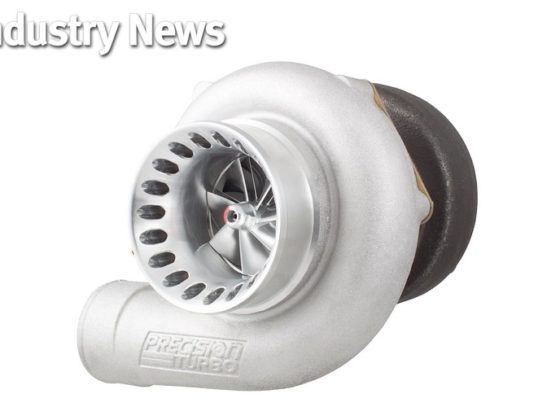
Turbo Tech: Calculating Compressor Flow
Turbo Tech: Size Matters gave a quick and easy way to get in the ballpark for picking the right size turbo for an application. For those of you comfortable with crunching a few numbers in a spreadsheet, there are math equations to calculate compressor mass flow and pressure ratio. They are the same equations that go into the Garrett Boost Advisor and Borg Warner MatchBot. To perform the calculations, a few critical pieces of information are required: power, air/fuel ratio, BSFC (brake specific fuel consumption), volumetric efficiency, air filter pressure drop, and intercooler pressure drop.
 These are the equations we will be using. Calculating the compressor mass flow is pretty easy if you know the power of the engine, A/F ratio, and BSFC; BSFC tells you how efficient the engine is. The lower the BSFC value, the better as it means the engine has to burn less fuel to make the same power. The other half of the compressor map is compressor pressure ratio(PR). To calculate PR, you need to know the intake manifold pressure, air filter pressure drop, and intercooler pressure drop. The equation for calculating the intake manifold pressure is basically the ideal gas law and mass flow rate divided by engine speed to take time out of the equation. Remember to use absolute values in the equations, so temperature is in degrees Kelvin and pressure is absolute, not gage.
These are the equations we will be using. Calculating the compressor mass flow is pretty easy if you know the power of the engine, A/F ratio, and BSFC; BSFC tells you how efficient the engine is. The lower the BSFC value, the better as it means the engine has to burn less fuel to make the same power. The other half of the compressor map is compressor pressure ratio(PR). To calculate PR, you need to know the intake manifold pressure, air filter pressure drop, and intercooler pressure drop. The equation for calculating the intake manifold pressure is basically the ideal gas law and mass flow rate divided by engine speed to take time out of the equation. Remember to use absolute values in the equations, so temperature is in degrees Kelvin and pressure is absolute, not gage.Volumetric efficiency is very important here and is a significant character of an engine. As volumetric efficiency is in the denominator of the equation, an engine with higher VE (such as a late 90’s/early 2000’s B/K/F-series Honda) requires much less intake manifold pressure (boost pressure) for the same compressor mass flow as an engine with low VE (like an old SR20).
Let’s say I hypothetically want to turbocharge Project S2000 and make about 50% more power. I don’t have all the data required by the equations but I have a little bit and I can make reasonable estimations. The only hard data I have is my dyno plot from when I installed the Hondata KPro. I only have a vague memory of the A/F ratio, so I have to estimate there too.
 Here’s my dyno plot from Church Automotive on their Dynapack dyno. Church’s dyno basically puts out crank horsepower numbers, so this data works out nicely.
Here’s my dyno plot from Church Automotive on their Dynapack dyno. Church’s dyno basically puts out crank horsepower numbers, so this data works out nicely. I do not have the BSFC values for my engine, but I found this one for some V6 gasoline engine with values that seemed reasonable.
I do not have the BSFC values for my engine, but I found this one for some V6 gasoline engine with values that seemed reasonable.



